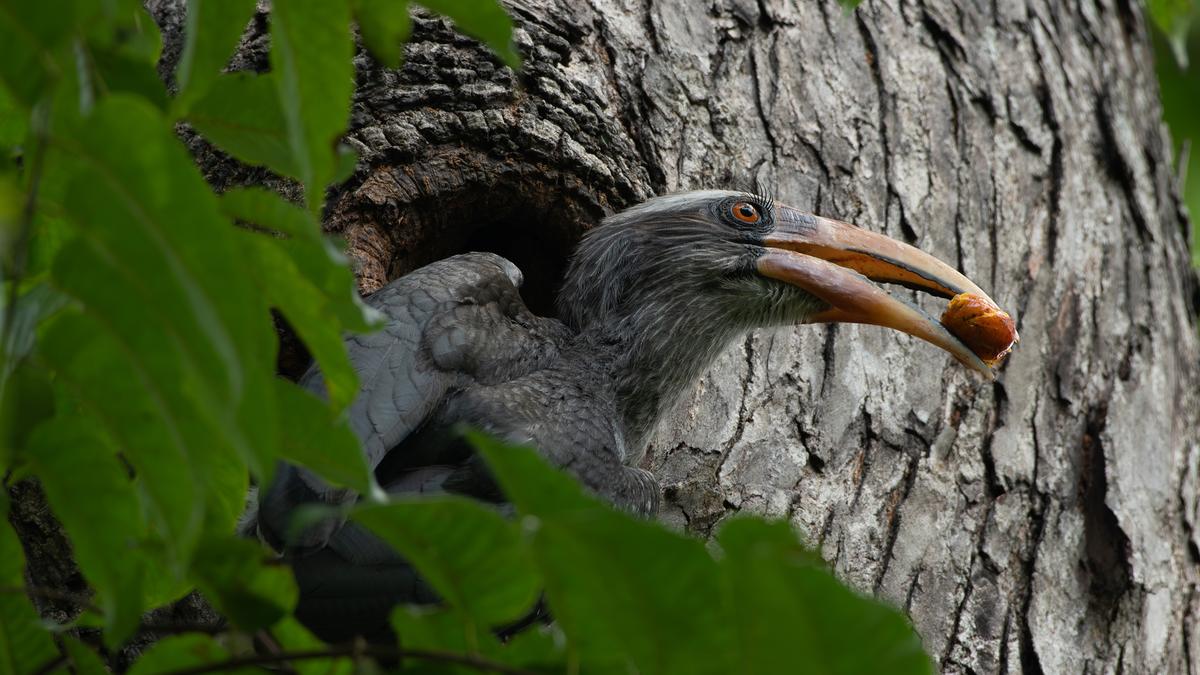DRDO’s Long-Range Glide Bomb (LRGB) ‘Gaurav’

- 13 Apr 2025
In News:
The Defence Research and Development Organisation (DRDO) successfully conducted release trials of the indigenously developed Long-Range Glide Bomb (LRGB) ‘Gaurav’ from a Su-30 MKI aircraft.
About LRGB ‘Gaurav’
- Type: Air-launched, precision-guided munition.
- Purpose: Designed for accurate strikes on land targets from stand-off distances, i.e., beyond enemy air defence range.
- Indigenously developed by DRDO under the Ministry of Defence.
Key Features
- Range:
- Demonstrated precision strike at nearly 100 km.
- Operational range: 30–150 km.
- Variants by Weight:
- Gaurav (winged): 1,000 kg
- Gautham (non-winged): 550 kg
- Guidance Systems:
- Inertial Navigation System (INS)
- Satellite-based navigation (e.g., GPS/IRNSS)
- Digital control for enhanced accuracy
Significance
- Boosts India’s precision strike capability.
- Promotes self-reliance in defence technology under the Atmanirbhar Bharat initiative.
Related Concepts
Glide Bomb:
- A precision-guided munition that travels significant distances without powered propulsion.
- Uses aerodynamic lift to glide toward the target.
- Navigation via INS, GPS, or laser guidance.
Su-30 MKI Aircraft:
- A twin-engine, multirole fighter aircraft.
- Developed jointly by Sukhoi Design Bureau (Russia) and Hindustan Aeronautics Limited (HAL).
- Backbone of the Indian Air Force (IAF) combat fleet.
Legionnaires’ Disease
- 13 Apr 2025
In News:
Health authorities in New South Wales (NSW), Australia, have issued a public alert after a spike in Legionnaires’ disease cases in Sydney. The outbreak is suspected to be linked to contaminated air-conditioning systems in the city.
About Legionnaires’ Disease
Aspect Details
Cause Legionella bacteria, found in freshwater and man-made water systems
Type A severe form of pneumonia
Related Disease Pontiac fever – a milder, flu-like respiratory illness caused by the same bacteria
Key Features
- Symptoms:
- High fever, cough, shortness of breath
- Muscle pain, headaches, confusion
- Diarrhoea or nausea in some cases
- Transmission:
- Not person-to-person
- Spread through inhalation of contaminated aerosols (e.g., from cooling towers, air conditioners, hot tubs)
- Risk Factors:
- Elderly individuals
- Smokers
- People with weakened immune systems or chronic lung conditions
Treatment and Prevention
- Treatment: Requires antibiotic therapy
- Vaccine: No vaccine currently available
- Prevention:
- Regular maintenance and disinfection of water systems
- Monitoring air-conditioning and cooling systems
Indian Giant Flying Squirrel
- 13 Apr 2025
In News:
A rare sighting of the Indian Giant Flying Squirrel (Petauristaphilippensis) has been reported in Ranikhet, a hill station in Uttarakhand, highlighting the ecological richness of the region.
About Indian Giant Flying Squirrel
Feature Description
Scientific Name Petauristaphilippensis
Size Body length: 30–45 cm; Tail length: up to 60 cm
Appearance Rufous coat, grey underparts, large eyes, and a gliding membrane from wrist
to ankle
Locomotion Glides up to 60 meters between trees using patagium (gliding membrane)
Habitat and Distribution
- Found in tropical and subtropical forests across central and southern India
- Inhabits evergreen, semi-evergreen, and deciduous forests, especially near forest edges
- Recent sighting in Uttarakhand indicates possible range expansion or overlooked presence
Ecological Role
- Diet: Fruits, nuts, leaves, and bark
- Acts as a seed disperser, supporting forest regeneration
- Considered a keystone species due to its ecological significance
Behavioural Traits
- Nocturnal and arboreal
- Emits alarm calls upon detecting predators like owls
- Active at night, gliding from tree to tree in search of food
Conservation Status
Category Status
IUCN Red List (Global) Least Concern
IUCN Status (India) Near Threatened (due to habitat loss)
Wildlife Protection Act, 1972 Schedule II
Threats
- Habitat loss and fragmentation
- Deforestation and degradation of forest corridors
- Increasing human encroachment in forested landscapes
Kerala Researchers win International Grant for Hornbill Conservation

- 13 Apr 2025
In News:
A team of young researchers from Kerala has won the prestigious Future Conservationist Award by the Conservation Leadership Programme (CLP) for their community-driven project on conserving the Malabar Grey Hornbill in Wayanad.
About Malabar Grey Hornbill (Ocyceros griseus)
- Status: Vulnerable (IUCN Red List)
- Legal Protection: Schedule IV of the Wildlife Protection Act, 1972
- Endemic to: Western Ghatsand parts of the Nilgiris, Wayanad, and Anamalai Hills in Southern India.
- Habitat: Evergreen forests, plantations, and agricultural landscapes
- Ecological Importance: Cavity-nesting frugivore, plays a key role in seed dispersal
- Nesting Behavior:
- Nests in secondary cavities (e.g., old woodpecker hollows)
- Reuses the same nesting cavity for years
- Dependent on cavity-bearing trees, often outside protected areas
About the Future Conservationist Award (CLP)
- Awarded By:
- Fauna & Flora International
- BirdLife International
- Wildlife Conservation Society
- Purpose: Supports early-career conservationists with funding and mentorship
- Focus Areas: Field conservation, community engagement, biodiversity monitoring
Taiwan Strait
- 13 Apr 2025
In News:
China has recently launched aggressive military drills in the Taiwan Strait, heightening tensions in the region and drawing international concern over the stability of the Indo-Pacific.
About Taiwan Strait
- Location: Separates mainland China from the island of Taiwan.
- Connectivity: Links the South China Sea to the East China Sea.
- Width:
- Widest point: ~180 km
- Narrowest point: ~130 km
- Depth: Average of about 70 meters.
- Key Islands: Includes the Pescadores (Penghu) Islands, administered by Taiwan.
- Historical Name: Known as Formosa (meaning “Beautiful”) by Portuguese explorers in the 16th century.
Strategic and Economic Importance
- Maritime Trade Route:Nearly 40% of the world’s container ship traffic passes through the Taiwan Strait annually.
- Fisheries:One of China’s richest fishing zones, home to over 100 economically significant fish species.
Geopolitical and Historical Context
- Post-1949 Divide:Became a de facto boundary after the Nationalist government retreated to Taiwan post-Chinese Civil War.
- Taiwan Strait Crises:First Crisis (1954–55) and Second Crisis (1958) involved artillery attacks by the PRC on ROC-held islands.These crises prompted U.S. military support to Taiwan to prevent escalation.
Why it matters for India and the World
- Rising tensions in the Taiwan Strait could disrupt global trade and impact Indo-Pacific security.
- Strategic for India’s maritime interests and foreign policy under the Act East Policy and Indo-Pacific strategy.
